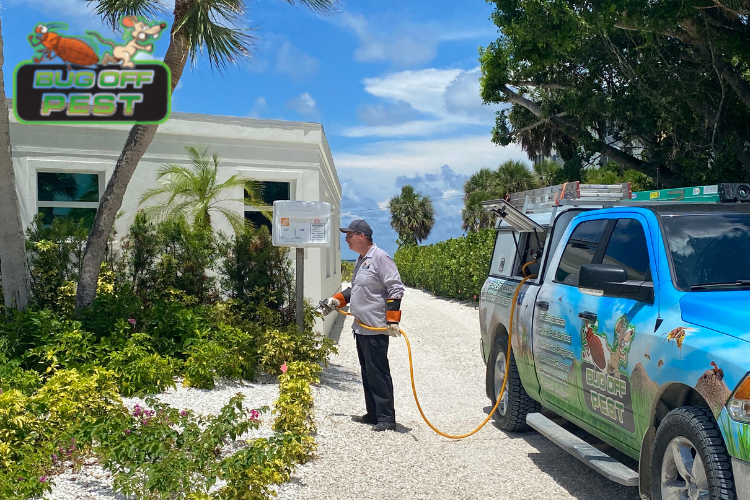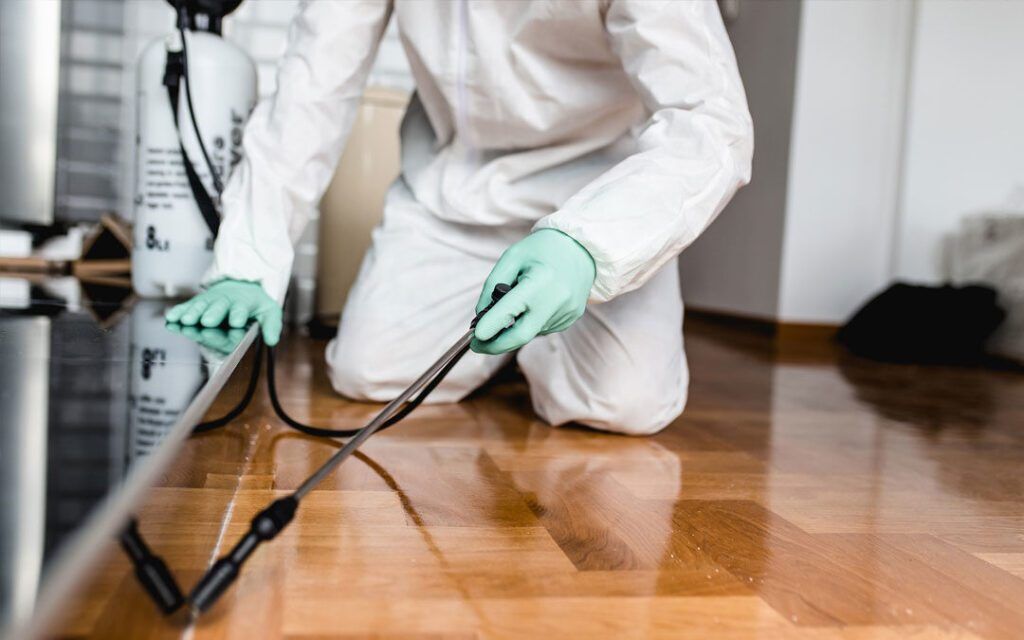Affordable Residential Pest Control Service in Port Charlotte
Comprehensive Guide to Recognizing Insect Control Techniques and Their Therapy
Comprehending parasite control approaches is important for reliable management of undesirable organisms that posture dangers to wellness, agriculture, and building. What factors should be considered when selecting the appropriate insect control method for a particular situation?
Introduction of Insect Control Methods
Parasite control techniques encompass a range of techniques designed to take care of and eliminate undesirable organisms that can harm human wellness, farming, and home. Reliable parasite management is important for keeping the integrity of ecosystems and ensuring the safety and security of food materials. These approaches can be generally categorized into three main methods: cultural, mechanical, and organic controls.

Social control entails modifying farming practices or environmental conditions to minimize bug establishment and reproduction. This method consists of plant turning, hygiene, and picking pest-resistant plant varieties. Mechanical control counts on physical barriers or devices to avoid pest accessibility or directly remove them. Examples consist of catches, nets, and hand-picking dangerous bugs.
Biological control uses all-natural killers, parasites, or pathogens to manage pest populaces. This technique emphasizes ecological equilibrium and can consist of introducing helpful pests, such as ladybugs or aggressive nematodes, to manage parasite existence.
Integrated parasite administration (IPM) integrates these techniques, utilizing an all natural method that emphasizes avoidance, tracking, and liable administration. By using a mix of these techniques, pest control can be extra lasting and effective, decreasing reliance on chemical treatments while securing human health and the atmosphere.

Chemical Insect Control Solutions
A variety of chemical pest control remedies are readily available, providing reliable options for taking care of pest populaces when other methods may fail. These remedies mostly consist of pesticides, herbicides, fungicides, and rodenticides, each designed to target specific pests while minimizing harm to non-target microorganisms.
Insecticides are especially efficient against a series of bugs, consisting of ants, cockroaches, and termites, and can be categorized as call or systemic agents. Get in touch with insecticides eliminate pests on contact, while systemic insecticides are soaked up by plants, making them toxic to pests that prey on them. Herbicides are made use of to manage unwanted plants, whereas fungicides are necessary for managing fungal diseases that can harm crops and decorative plants.
Rodenticides, made for rodent control, are readily available in numerous solutions, consisting of lures and tracking powders. It is essential to comply with tag instructions carefully to guarantee safety and security and efficiency. In addition, incorporated bug administration (IPM) concepts need to be used, incorporating chemical solutions with social, mechanical, and organic approaches for lasting parasite control. This all natural technique not only enhances pest management effectiveness but likewise decreases prospective ecological influences connected with chemical usage.
Biological Bug Control Strategies
Organic insect control strategies use an ecologically pleasant option to chemical methods by utilizing all-natural killers, parasites, or microorganisms to take care of insect populaces. This technique leverages the ecological connections between microorganisms, promoting a balanced ecosystem while decreasing chemical residue in the atmosphere.
Among the most usual biological control techniques entails the introduction of all-natural opponents. Ladybugs are employed to control aphid populations, while parasitic wasps can target caterpillars and other parasites. These natural predators efficiently lower pest numbers without harming advantageous bugs.
Furthermore, microbial agents such as germs, fungi, and infections are utilized to contaminate and kill certain pests. Bacillus thuringiensis (Bt), a naturally happening germs, is commonly made use of to regulate caterpillars and various other larvae, showcasing the effectiveness of microbial other insect control.

Physical and Mechanical Methods
Regularly used in incorporated insect management techniques, physical and mechanical methods function as reliable devices for regulating insect populations without the usage of chemicals. These techniques rely upon physical barriers, traps, and various other mechanical gadgets to stop or remove parasites, making them eco-friendly alternatives.
Physical methods consist of using barriers such as insect netting, screens, or row covers that physically obstruct pests from accessing plants. This is especially helpful in farming settings where plant protection is essential. In addition, habitat manipulation, such as getting rid of debris and standing water, can reduce parasite breeding sites, therefore reducing invasions.
Mechanical techniques encompass traps, which can be created to capture certain pests. Sticky catches and pheromone traps are usual instances that draw and preserve insects, promoting monitoring and Go Here control. Vacuuming is one more mechanical technique, effective for eliminating parasites from interior environments, specifically in cases of infestations.
Preventative Insect Management Techniques
Efficient preventative pest management strategies are crucial for keeping healthy atmospheres and lessening pest-related concerns prior to they emerge (Pest Control in Port Charlotte, FL). These approaches concentrate on aggressive measures that reduce the likelihood of pest invasions by resolving the source

One more important strategy entails correct landscape design techniques (Pest Control in Port Charlotte, FL). Maintaining greenery trimmed and away from structures can reduce harborage areas for insects. In a similar way, executing integrated bug monitoring (IPM) methods that consist of keeping an eye on insect populations and employing organic controls can foster a well balanced community that normally suppresses pest numbers.
Education and learning and training for staff and residents on recognizing very early indicators of insect activity are likewise vital elements of an efficient preventative program. By fostering an environment of understanding and alertness, organizations and home owners can considerably enhance their bug administration initiatives and guard their areas against future problems.
Verdict
Finally, efficient pest control calls for a diverse method that integrates chemical, organic, and mechanical techniques. Using an Integrated Parasite Administration (IPM) framework enables the sustainable management of pests while minimizing eco-friendly effect. Preventative methods better boost the efficiency of these methods, guaranteeing lasting defense of health, farming, and residential property. Eventually, a thorough understanding of these diverse insect control methods is important for accomplishing effective end results in pest management efforts.